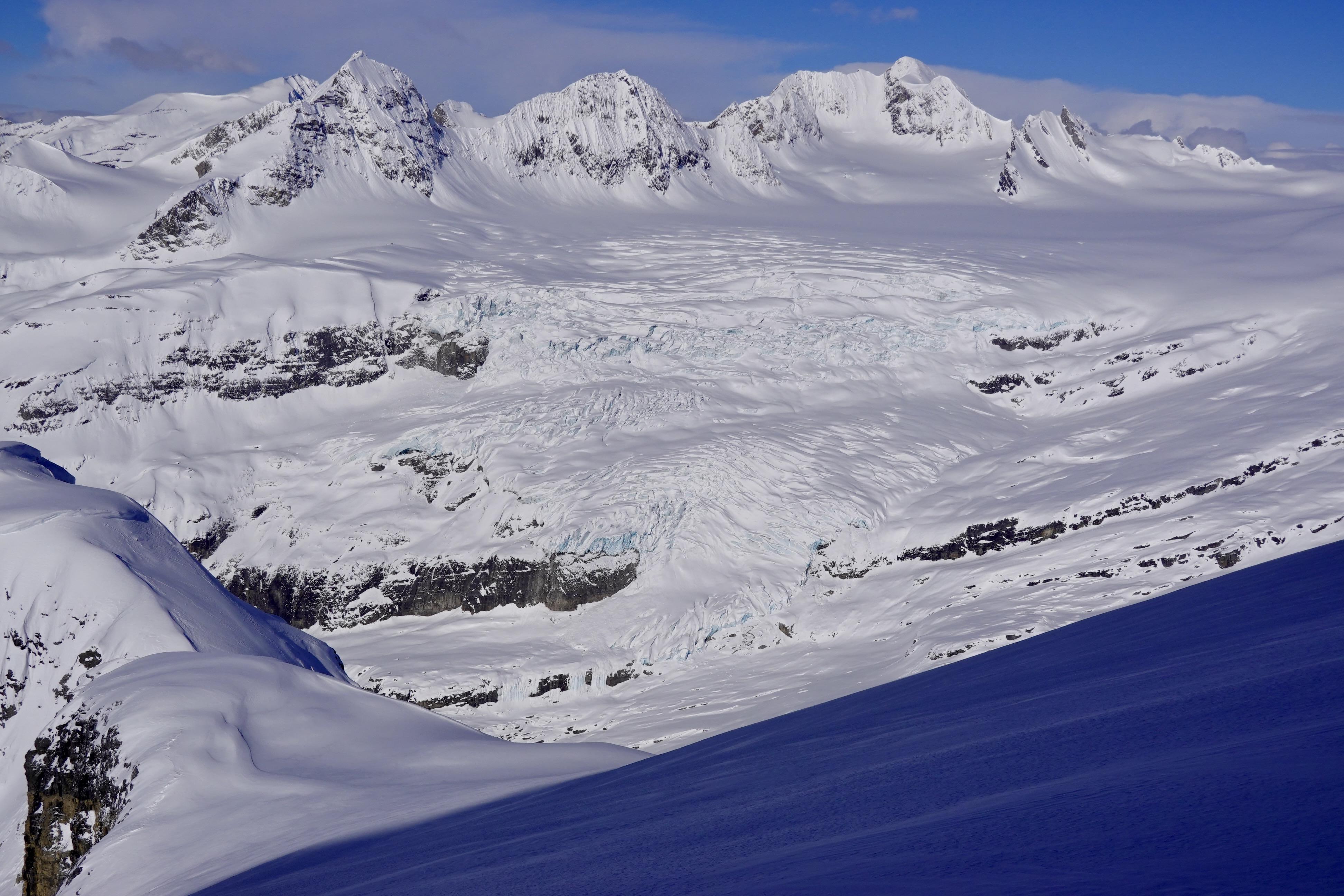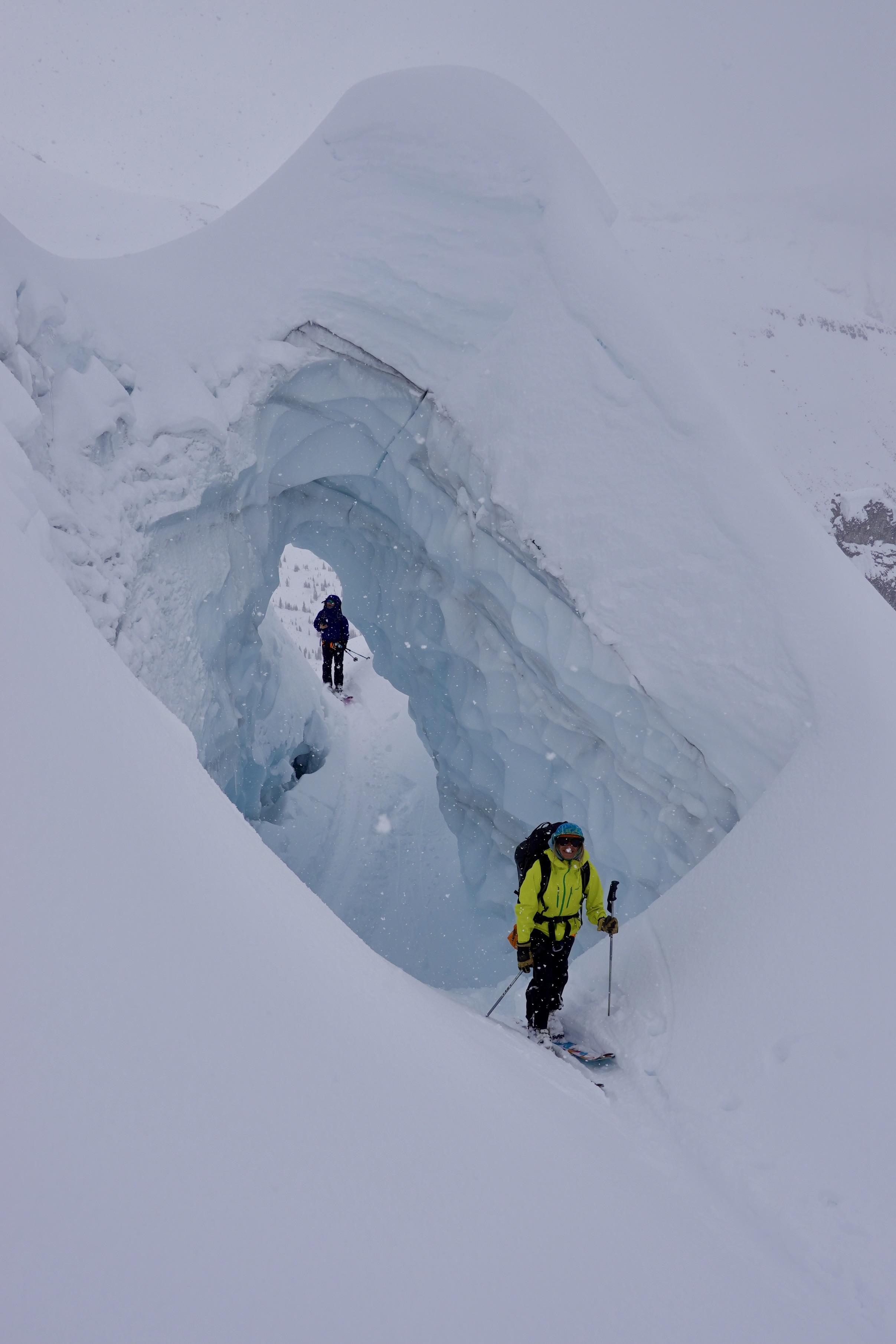I finished guiding the Icefall Traverse for Icefall Lodge today, another excellent adventure!
We started our Traverse at the Mons Hut, summiting Mons Peak in the clouds on the first day and skiing back down in a white-out. We then continued over to the Lyell Hut, Alexandra Cabin (via the Deep End), Icefall Lodge for 2 nights, then our last night at the Rostrum Cabin before flying out today.
**Snow conditions
We had great spring powder skiing in most places all week down to 1700m. On steep southerly aspects it was usually breakable rather than supportable crust. We only used ski crampons once all week on some steep southerly slopes in the alpine, never below tree-line as low as 1100m.
**Weather**
We had mostly overcast skies, with the ceiling often around the bottom of the glaciers, limiting our visibility. Temperatures got down to around -20 above 3000m, and the freezing levels rose to around tree-line on the warmest days. We received about 10cm of storm snow in the past couple of days, with winds reported to be over 100kph at the Lyell Hut.
**Glaciers**
The glaciers have noticeably less snow cover and more visible/open crevasses than the past few years. Probing showed an average of around 200cm around the Mons and Lyell Ice fields, though many convex and shallow areas had as little as 15cm, with some bare ice visible in a couple of locations on regular travel routes. It was rare to be able to bury the whole probe (over 300cm) in the Mons and Lyell areas. However, the glaciers in the Rostrum Valley (usually a deeper snowpack here) had over 300cm’s everywhere I probed. We didn’t ski down the Wild West Glacier this year due to visibility, cold and wind, but the guide ahead of me skied down it with their group the day before and reported it was more broken and challenging than usual.
**Snowpack and Avalanches**
I was at Icefall Lodge in February and then again a couple of weeks in Mid March, so I’ve been watching the snowpack evolve since then, particularly the basal facets and depth hoar.
Although Icefall Lodge is in the Rocky Mountains, it is on the west slopes and the snowpack is deeper and more similar to the Northern Selkirk’s than Banff. This season there’s about 50cm of facets and depth hoar at the bottom of the snowpack, which is unusual for the area.
I haven’t dug down to the basal facets for a couple of weeks, but probing shows they’re still there. This was also confirmed by a size 3 Deep Persistent Slab avalanche a few days ago on the North side of La Clytte Mountain in extreme terrain, failing on glacier ice (trigger unknown). This is the only large slab avalanche on this layer observed in the area for over a month. The only other activity on the basal facets in the last month has been loose wet avalanches scrubbing down to ground, occasionally triggering slabs up to size 1.5.
Despite the basal facets, my confidence in the snowpack has been slowly improving as the upper and mid layers of the snowpack have become well consolidated and bonded, bridging over the deeper layers. I finally felt confident enough the past week to step out into some bigger terrain up to 45 degrees such as the run Vitamin P. In a normal season this run gets skied most weeks, but I don’t think it’s been skied previously this season.
There was noticeably less large avalanche debris in valley bottoms than typical the past week. I suspect this is due to the shallower snowpack and lack of a big warmup so far. When it does finally warm up, the basal facets will probably become sensitive enough to be triggered naturally or artificially (eg. by skiers) in certain places during the heat of the day.
Enjoy the spring skiing!





